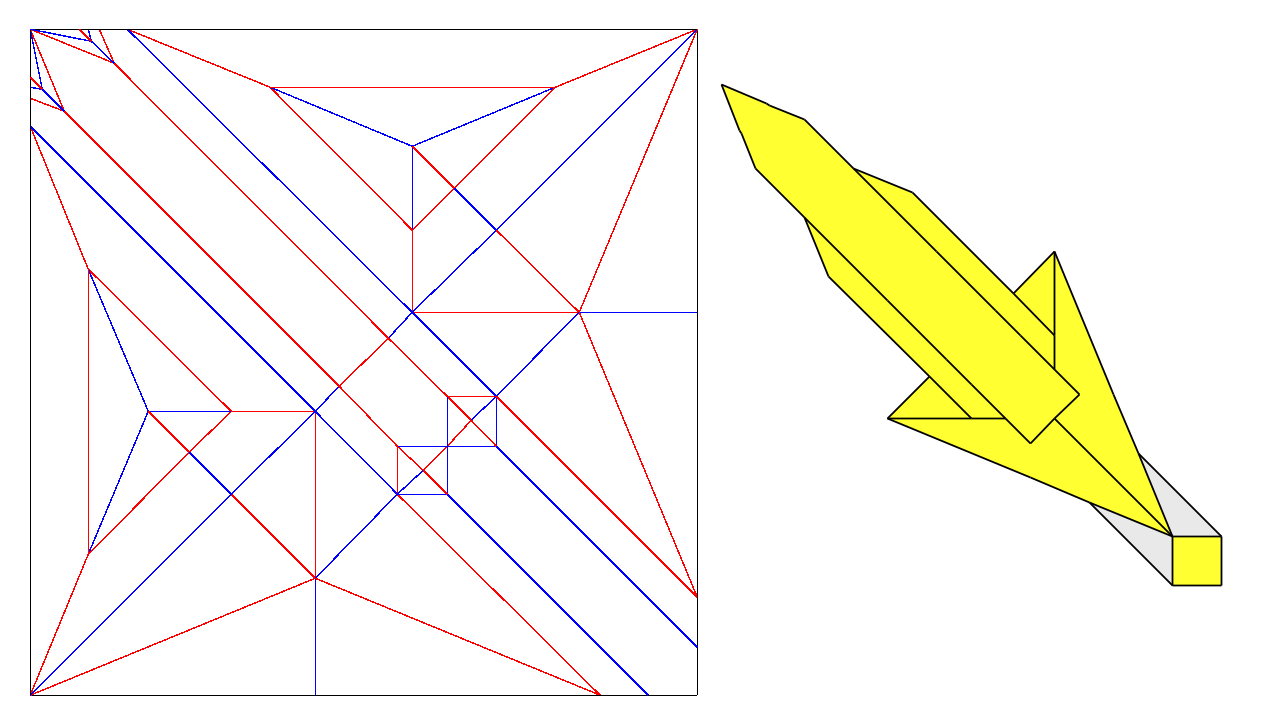


Great Blue Herons are the largest of the herons present in North America. Of majestic size, their height ranges from 97-137 cm. Population estimates are rough due to the birds’ wide range, but there are at least several hundred thousand in the wild.
This design started off as a doodle from a six inch square of that ubiquitous origami paper (kami) you can find installed in every art or crafts store and bookstore chain outlet. The neck was stubby and the head was folded to peer behind into the distance. While I liked the pose, the model had only one leg and was concernedly overweight.
Frankly, it might be unwise to consider that doodle to be a previous iteration of the current model; the only similarities between the two are the pair of reverse folds on each side of the head. After the first burst of inspiration, I used a large strip graft down the diagonal in an attempt to lengthen the neck and leg. In the end, nothing got longer, but I did get two legs. Unfortunately this version had an excess of material at the center of the paper that had to be hidden with an unwieldy sink. Enlightened, I realized that that I should stop making things harder for myself, and change the packing so that the legs are placed at the corners (long flaps are easier to fashion out of the corner of the paper). A quick test fold indicated that this direction was promising. Several grafts later, I had achieved a longer neck and legs, as well as extra paper for toes. But I soon realized that grafts were not the answer, and removed one graft. The remaining strip of paper extended along the diagonal from the head to the tail and allowed for the detailed curvature of the coverts of the wings, tail feathers, as well as the color-changed beak and eyes. I folded the final model from a hand-painted sheet of Japanese foil, and most of the final shaping on the neck, wings, and tail originated at this stage. I’ll have to share my color mixes at some point.
